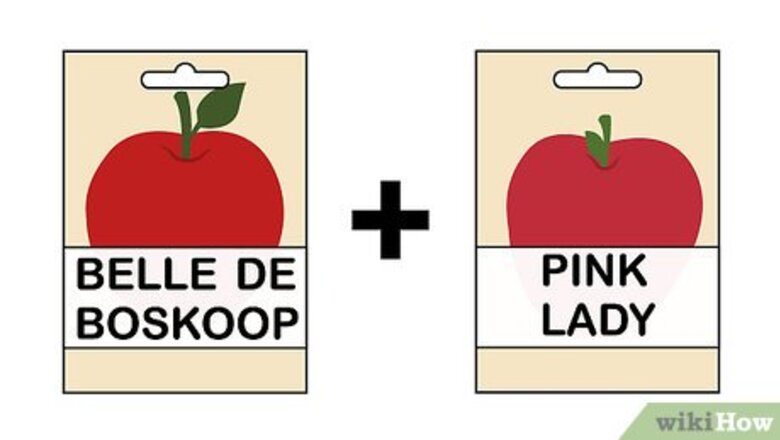
views
X
Research source
For example, if you plant a Granny Smith apple seed, you might not end up with a Granny Smith apple tree. It might be some other type of apple from the Granny Smith lineage. If you want to plant an apple tree from seed, there are several things you will need to do to increase your chances of success.
Simulating Winter
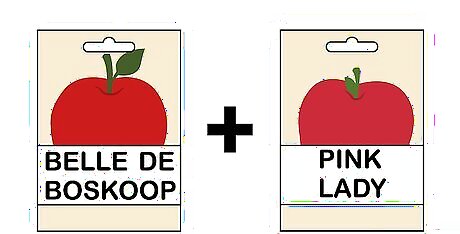
Collect two different kinds of seeds. Apple trees must be planted in pairs in order to bear fruit—apple trees are not self-pollinating, so they need a different kind of apple tree to pollinate with. You can either extract the seeds from an apple you are eating, or buy apple seeds at the store. Keep in mind that growing an apple tree from the seeds you have collected does not necessarily guarantee that the tree produced from these seeds will bear fruit or be the same kind of apple. Try to pick or buy seeds of apple trees that do well in your climate zone or else your tree may die once planted outside. If you want to grow apples for their fruit, it is recommended that you buy a sapling tree from a nursery rather than growing an apple tree from seed. To learn how to transplant a young tree, click here. When attempting to grow an apple tree from seed, you should also keep in mind that the tree produced will not have any dwarfing characteristics (meaning that it will grow to its full height of about 30 feet/9 meters). If you think you have enough room in your yard for this tree, great! You should also keep in mind that trees planted from seeds could take 8 to 10 years to produce fruit, while a transplanted sapling will produce fruit in a much faster time frame.
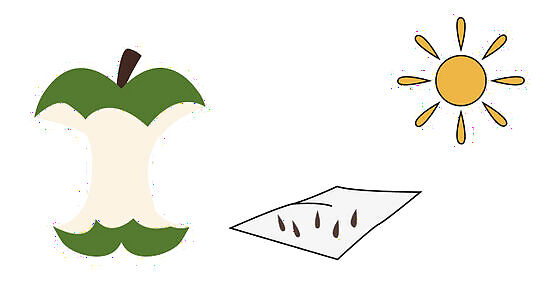
Lay your seeds out to dry. Once you have extracted the seeds from the fruit and have gotten rid of any pieces of the fruit clinging to the seeds, you should lay them out to dry. This means simply air drying them until there is no moisture on the outside shell.
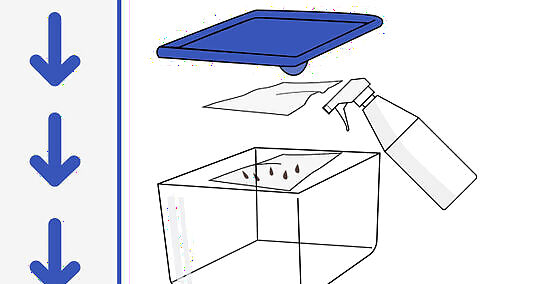
Cover your seeds with a damp paper towel. Place the paper towel and seeds into a sealable plastic bag, jar with a lid, or Tupperware box. Whatever your container is, make sure it can be sealed. You can also use moist peat moss rather than paper towels if you have any peat moss just hanging around.
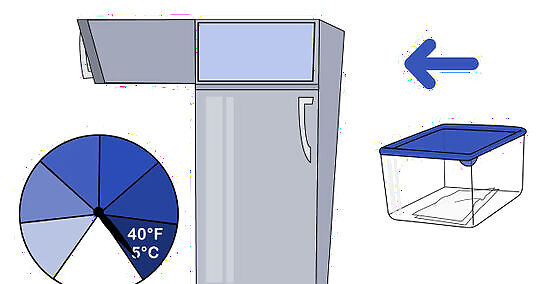
Place your seeds in the fridge. Seeds need a period of exposure to cold temperatures called “after-ripening”. This is essentially simulated winter. During this time, the seeds will begin to grow roots and sprout. They will need to be left in there for 70 to 80 days. Keep the temperature the seeds are stored at around 40 to 50ºF (4.4 to 10ºC), with optimal temperature being 40 to 41ºF (4.4 to 5ºC). If possible, do this during actual winter so that when you take the seeds out of the fridge, they will be aligned with the actual seasons. Planting your sprouts in the early spring after the last frost will have the best results.
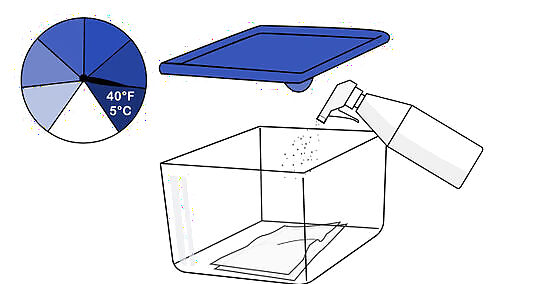
Check every so often to make sure the towel stays damp. It is important to keep the towel damp while the seeds are in the fridge, so check them daily. However, keep in mind that the seeds will not sprout while they are in the fridge.
Potting the Sprouts
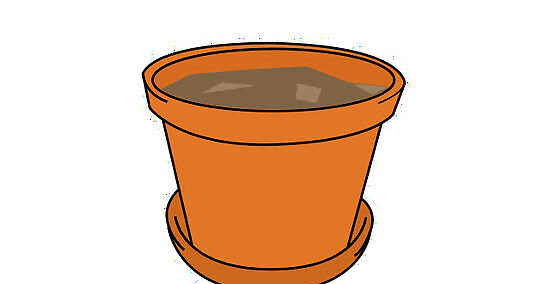
Prepare your pot and soil. Your seeds will need to be planted outside in a prepared seedbed or in a pot. Use a good potting mix. Apple seeds grow best in soil with a neutral pH level. Fill the pots with the soil and create a divot in the soil that is one to two times larger than the sprouted seed. Do not add any fertilizer. It is not necessary, though you can add leaf mulch or compost if you want to give you seedling an extra boost.
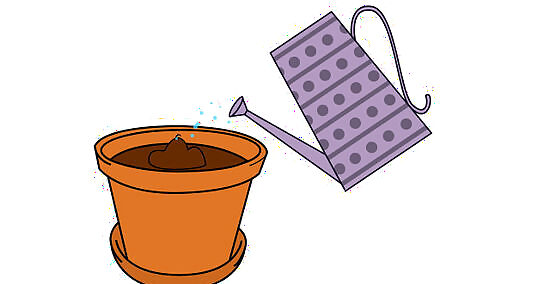
Place the seed in the divots of soil. Put the seeds into the soil divots and then cover them, making sure to gently pat the soil down. Water the seed immediately so that the soil settles around the seed and the soil stays moist.
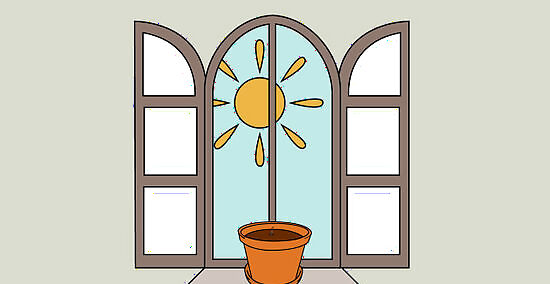
Keep the pot at room temperature. While growing in the pot, the seed and soil should be kept at, or slightly higher than, room temperature. The seed should have access to sunlight for a good part of the day, so putting it in a windowsill that gets sunlight for some of the day is a good idea.
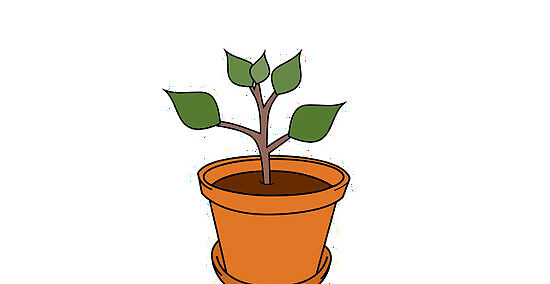
Watch your seedling for growth. Several weeks after planting, your seeds should begin to start throwing up little leaves. From there they will grow taller and stronger. Keep them in pots until they look strong and any risk of frost has passed. If you think your seedling is outgrowing its pot, transplant it to a larger pot and keep watering it daily.
Planting Your Seedling Outside
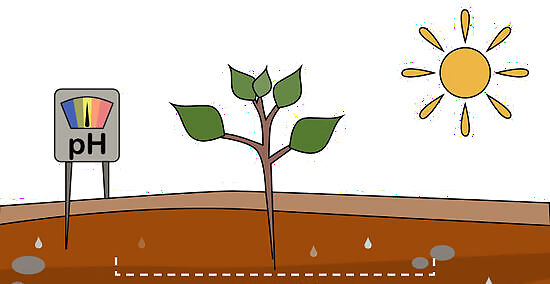
Pick a location for your tree(s). There are several factors that should determine the spot you plant your tree. These include sunlight, soil, and space. Sunlight: Apple trees need full sun. This means that they should get six or more hours of direct sunlight every day. Where you plant your tree will depend on your location. An eastern facing slope is usually a good choice, but a north facing slope may also work. Evaluate your options for possible locations before you plant. Soil: Apple trees don’t like soggy feet. That means they need to be planted in soil that will retain moisture but does drain well. The soil should be moderately rich and have a relatively neutral pH level. Space: Because you are growing your tree from seed, it will grow to full size (meaning it can reach 20-30 feet/6-9 meters in height). You will need to make sure that it has enough space for its root system to grow. Plan to plant your tree at least 30 feet (9.1 m) from another tree, particularly if you are planting two apple trees in a row.
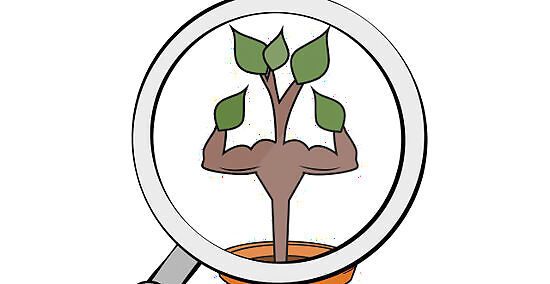
Know when the conditions are right for transplanting. Once your little sapling has gotten big enough that no one will step on it or think it is a weed, carefully transplant it without cutting off any roots. The best time of year to plant depends on your location--in Zone 8 and warmer, fall planting can work well. If you live anywhere other than a Zone 8, plant in spring. once the threat of hard frost has passed.
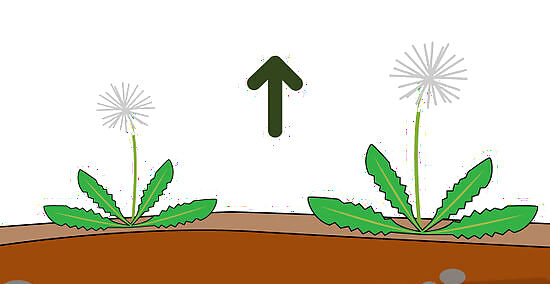
Remove any weeds in a four-foot diameter of the planting site. Dig a hole that is twice the diameter or your sapling’s root system. Make sure that the hole is roughly two feet (.6 meters) deep. Once you have made the hole, try to loosen the soil of the walls of the hole--this will help your tree’s roots to penetrate the soil.
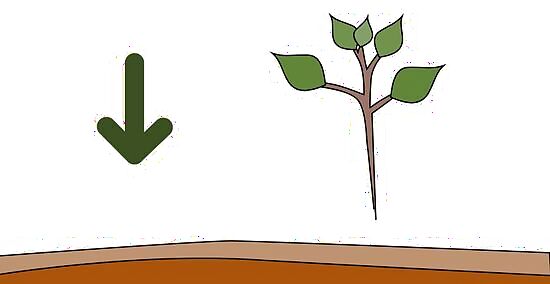
Transplant your sapling. Gently spread out your tree’s roots so they are not tangled or get bunched up in the hole you have dug. Start to replace soil all around the roots. Once you have covered the roots, pat the soil down firmly to get rid of any air pockets that might be hanging out around the roots. Fill the rest of the hole with loose soil. Again do not add any fertilizer or un-aged compost to the soil around your tree. The fertilizer could actually ‘burn’ your young tree’s roots.
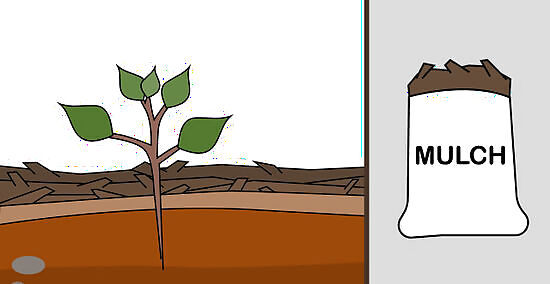
Water the tree in well to eliminate air pockets. After you have watered your tree, spread mulch to help you sapling retain moisture. Hay, straw, or organic hardwood chips work well as apple tree mulch. The mulch should be spread in a three foot circle around the tree. Doing this will help retain moisture and keep grass from growing and competing with your young tree's roots for water and nutrients.
Caring for Your Tree
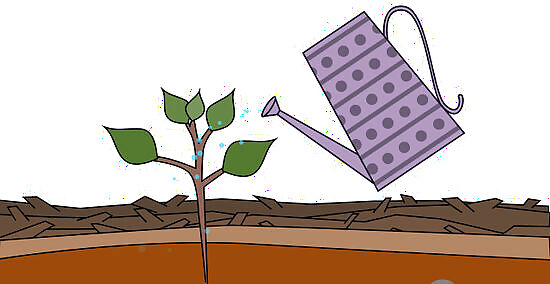
Water your tree. While the tree is still short (roughly 6-8 in/15-20 cm tall) the tree should be watered every 10 to 12 days. As the tree grows, however, you can cut back on the watering, so long as the soil continues to stay moist (but not soggy). As they grow, you will need to water them less frequently. However, in the summer, water your tree every one to two weeks. During other times of the year, you can let nature do the rest, unless you live in an extremely dry area. If this is the case, keep in mind that the equivalent of an inch or two (2.5-5 cm) of water a week is ideal for the first year. Make sure you give it a good soaking, not just a sprinkle.
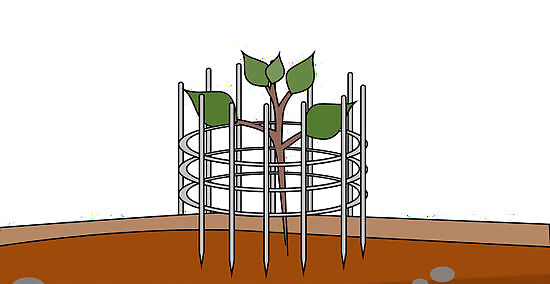
Ward off pests. If you live in an area with deer, you'll need to protect your young tree. Deer absolutely love to browse the buds on apple trees, in some cases they'll even damage the trunk itself. To protect your trees as they grow, cut a length of chicken wire that is tall enough to cover your tree, and long enough to form a loop around the tree. Secure the wire to a post and close the loop. Watch the tree as it grows so that limbs do not become entangled in the wire. In low-pressure areas, spraying the tree with a purchased or home-brew spray may also be effective. If deer are not a problem in your area, keep away rabbits and mice by placing short wire mesh around the base of the tree. Spray away insects. You might find yourself at battle with insects that are causing your fruit to become diseased. You can buy a spray at your local nursery or garden supply store to ward them off. Fight the apple maggot. These are one of the most common plagues to the apple tree. Hang a baseball-sized red ball or two in your trees branches in June. Coat the balls with sticky goo like Tangle Trap, which can be purchased at garden supply stores.
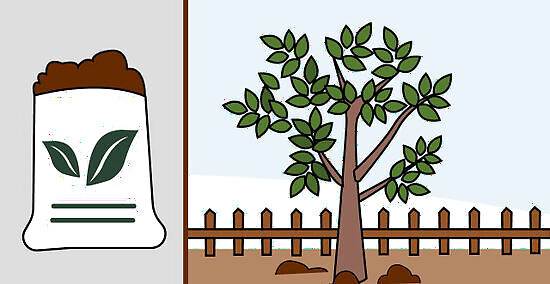
Fertilize your tree when it has gotten older. Your apple trees should be fertilized each spring. Fertilize the tree after the last snow has melted away (if you get snow) but before the tree begins to produce buds. You should use a fertilizer with a nitrogen and oxide content (NPK) of 10-10-10. You should lay the fertilizer down under the canopy of the tree and should put down half a pound (.23 kg) of it for every inch (2.5 cm) of the tree's trunk diameter. Always perform a soil test before adding fertilizer. You may need to use a slow-release organic fertilizer based on your soil test results. Too much nitrogen will cause excess vegetative growth and limit fruit production. Do not use a weed-and-feed fertilizer--these sort of combination fertilizers can hurt apple trees.
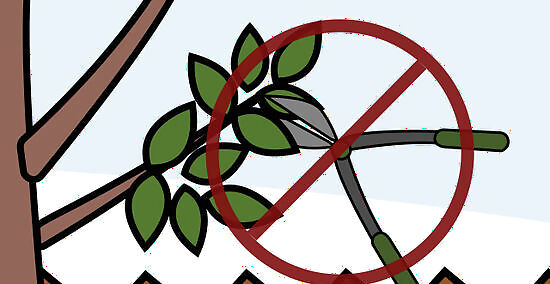
Hold off on pruning a young tree. Prune as little as possible the first few years, so you don't delay fruit bearing. You should prune off any branches that are dead or diseased. An apple tree wants to build a lot of growth before it decides to create fruit--its way of reproducing--so let it grow till it starts to bear. Rid your young tree of misplaced buds before they have the chance to grow into branches that you’ll just have to prune later. You will also need to prune the tree to establish a 'central leader'. If there are two limbs growing vertically, prune off the smaller or less-desired one so the tree can direct all of its energy towards the central leader.
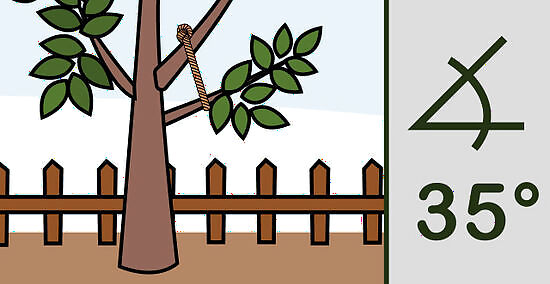
Train your tree. This may sound odd, but your tree’s branches will need to be shaped to maximize the fruit the tree produces. Any branch that has an angle of 35 degrees or less from the trunk will need to be trained into a better angle (any angle larger than 35 degrees from the trunk). Bend a stem down so that it is almost horizontal and tie it to stakes in the ground or lower tree branches with string. Leave it tied down for a few weeks.
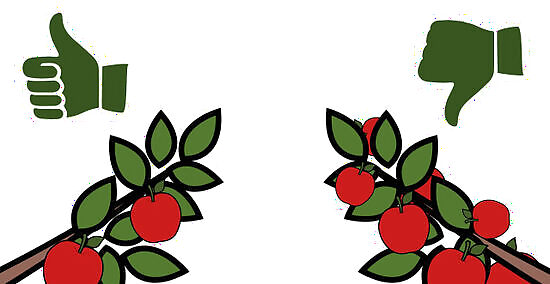
Thin excessive fruit. Producing too much fruit can actually be a bad thing for your tree—the excess fruit can weigh the tree’s branches down and reduce the quality of the apples produced. You should thin out the fruit so that there are only one or two apples per cluster, and so that they are roughly six to eight inches (15-20 cm) apart.
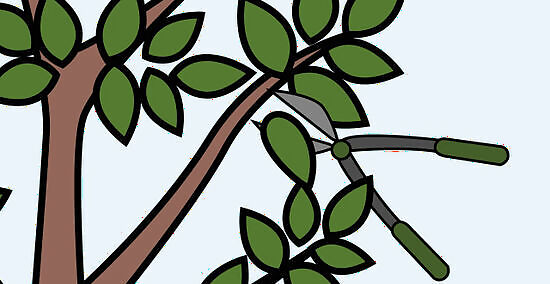
Prune a mature tree annually. Once your tree has produced fruit and filled in, you will need to provide it with annual pruning. Do this when the tree is dormant. Cut away vigorously growing stems that grow upright (these are normally found in the higher parts of the tree). You should prune off dead, diseased, or broken branches, as well as limbs that are growing in toward the tree or that are crossing each other. Cut away any very low growing limbs--in general, your tree’s limb should start growing roughly 18 inches (45 cm) or higher from the ground. You should also remove weak twigs, which generally grow on the undersides of branches.




















Comments
0 comment